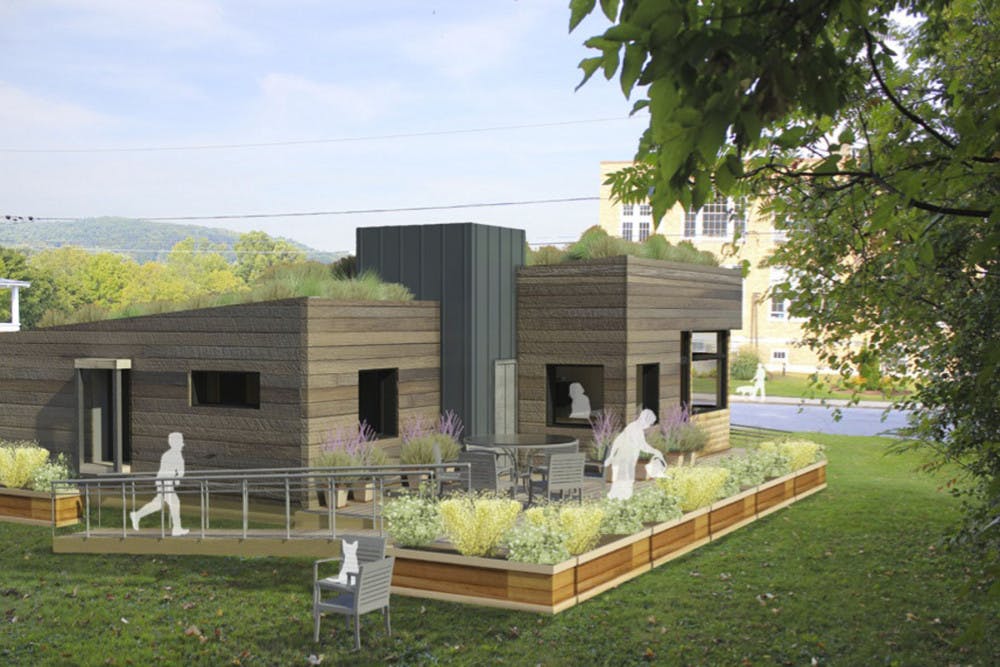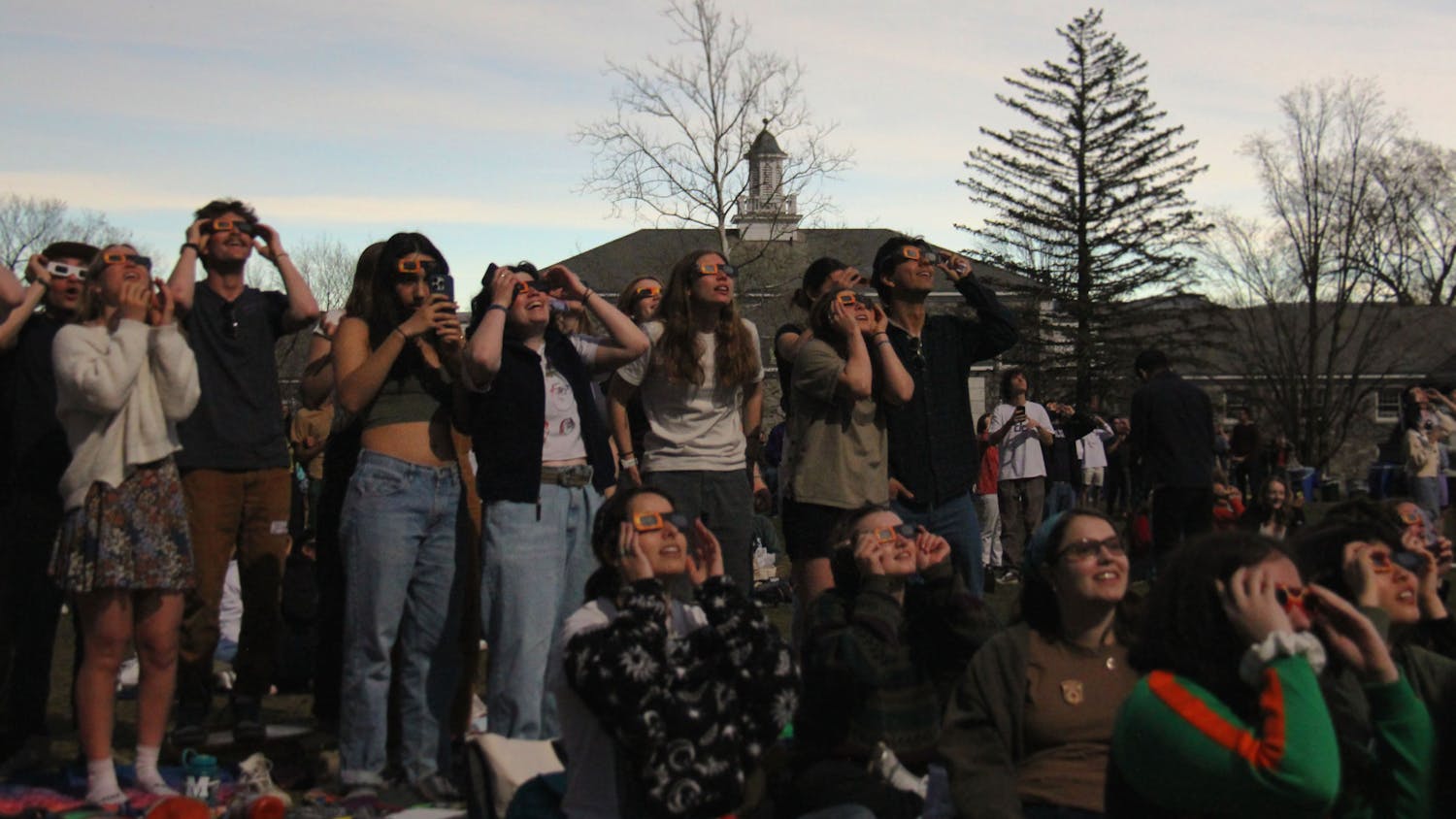“It started with one student having a crazy idea, one professor trusting it could happen and the administration putting a ton of trust in an idea that two years later got us fourth place in this competition,” said Cordelia Newbury ’13, one of the project managers of the Middlebury Solar Decathlon team.
The College will return to the Solar Decathlon competition for the second time in October 2013, and the team is currently in the early stages of construction on the College’s entry house, InSite. The Solar Decathlon competition, sponsored by the U.S. Department of Energy (DOE), challenges participating colleges and universities to design, construct and present an environmentally sustainable house.
While the guidelines for the house are issued by the DOE, the team is also working to construct a livable and sustainable structure that will permanently reside in Middlebury.
Work on InSite began in November 2011 when the team submitted their proposal to the DOE. Originally, the team intended to structure the house around the concept of “Infill,” a technical construction approach that emphasizes revitalizing utilized space in an existing community. Students later changed the project’s name to InSite to encompass a broader range of concepts in the thematic scheme of the house.
The name, InSite, incorporates three concepts of the house: the “site” of the house, their goal to “incite” change and their dedication to thinking and planning “insightfully.”
“The house is a representation of the ideas we are looking to promote,” said Construction Coordinator Jack Kerby-Miller ’14.
These ideas are laid out further in the team’s “Five Points,” a list of principles they aim to apply to the house at every step of the planning and construction process. The first three principles are simple: respecting nature in all contexts, addressing the street (making the façade of the house welcoming) and condensing energy networks.
The team also intends to structure the house in a way that provides public spaces, such as the living room and kitchen, with more square footage than private spaces, such as the bedrooms and bathrooms.
Team members stress other components of the project besides the environmental innovations of the house. With the mantra “passive homes, active communities,” the team hopes to educate, inspire and incorporate members of the local and global community into the project.
“When we talk about sustainability, we’re talking about the environment, and of course that’s really important. However, what we fail to address often is the social environment and the importance of the links between people and our interdependencies,” said Design Coordinator Ellie Krause ’14.
Work on the house has been constant since last spring. Sixteen student interns accomplished the majority of the design work over the summer as they developed plans for the house. The team has also spent considerable time establishing community links through phone-a-thons, website construction and outreach initiatives.
The team faces the task of raising the $1.4 million needed to fund the project.
“It’s a giant number, but as you break it down into chunks, it very quickly becomes very real,” said Krause.
The team requires $50,000 to cover transportation to California, $400,000 to pay for student labor, $200,000 for the re-establishment of the house back in Middlebury, $250,000 for construction materials and the remainder will cover consulting costs and outreach materials. Currently, the team has only raised $44,000.
In an effort to cover these costs, the College’s Solar Decathlon Finance sub-team is applying for grants, contacting private and corporate donors and planning fundraising events. They also hope to secure in-kind donations from companies whose products could then be showcased at the competition in California.
“We spent a lot of time building up fundraising strategy and connections. We have a really close relationship with College Advancement. They’ve been a really great mentor for us,” Newbury said.
The construction of the house will incorporate eco-friendly materials, including wood gathered from Middlebury’s campus, cellulose insulation and formaldehyde-free and low-volatility organic compound materials.
The house will rely on solar power, and the team has taken a non-traditional approach by deciding to place the panels in a path-like formation leading up to the house, rather than on the roof.
“The path will directly increase the connection between people [and the community], and also will become an educational resource,” said Krause. He suggested that the solar panel path could be replicated in other parts of the community, such as along sidewalks and in backyards.
Without panels, the roof is left free to be planted with sedum, a low-growing plant requiring little water that will insulate the home.
In the months leading up to the competition, the team is required to submit periodic deliverables to the DOE to monitor construction progress. Student leaders hope that construction on the house will begin in January, if not earlier.
During the competition, the house will be judged on several different accounts from maintaining a consistent air temperature to energy budget to effective communications.
Though excited about the project, student leaders noted the disadvantage the College faces being the only small liberal arts college in the group of twenty competing institutions.
“We aren’t an engineering school, and we have students who know nothing about plumbing or electrical or heating ventilation and air conditioning, and they have to learn how it works and then design it,” said Krause.
Yet, throughout the project, student leaders have attempted to leverage the global thinking skills afforded to attendees of a liberal arts college.
“We’re addressing these problems without as much background knowledge, so we can come up with completely unrestricted solutions,” said Krause. “We have the opportunity to challenge convention and come up with what hopefully are better solutions and ways to a better future.”
Solar Decathlon Competes Again

Comments



